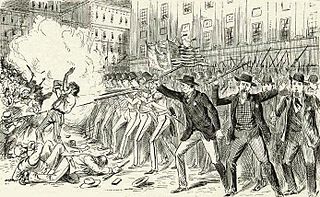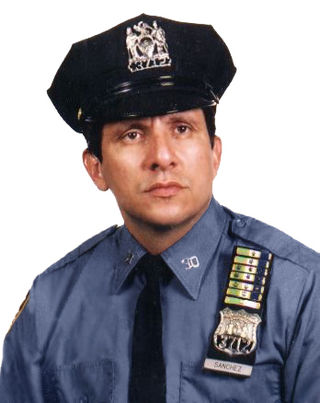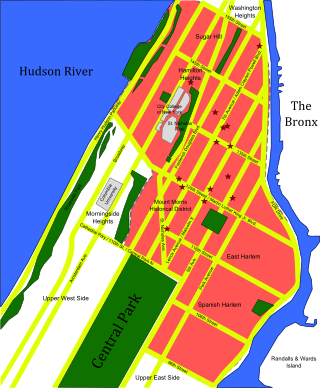
The Almighty Latin King and Queen Nation is a gang active primarily in the United States as well as internationally. The gang was founded by Puerto Ricans in Chicago, Illinois, in 1954. The Latin Kings are one of the largest Hispanic and Latino street and prison gangs worldwide.
The blue wall of silence, also blue code and blue shield, are terms used to denote an informal code of silence among police officers in the United States not to report on a colleague's errors, misconduct, or crimes, especially as related to police brutality in the United States. If questioned about an incident of alleged misconduct involving another officer, while following the code, the officer being questioned would perjure themselves by feigning ignorance of another officer's wrongdoing.

The Super Cops is a 1974 action adventure film directed by Gordon Parks and starring Ron Leibman and David Selby. The film is based on the book The Super Cops: The True Story of the Cops Called Batman and Robin by L. H. Whittemore. The film was released a few months after the successful cop movie Serpico.

The Commission to Investigate Alleged Police Corruption was a five-member panel formed in May 1970 by Mayor John V. Lindsay to investigate corruption and misconduct within the New York City Police Department (NYPD). The creation of the Commission was largely a result of publicized accounts of police wrongdoing, as revealed by Patrolman Frank Serpico and Sergeant David Durk. Lindsay's action was also prompted by a front-page exposé in The New York Times on April 25, 1970 that documented a vast scheme of illicit payments to police officers from businessmen, gamblers and narcotics dealers. In its final report, the Commission concluded that the NYPD had widespread corruption problems, and made a series of recommendations.

The Harlem riot of 1964 was a race riot that occurred between July 16 and 22, 1964. It began after James Powell, a 15-year-old African American, was shot and killed by police Lieutenant Thomas Gilligan in front of Powell's friends and about a dozen other witnesses. Hundreds of students from Powell's school protested the killing. The shooting set off six consecutive nights of rioting that affected the New York City neighborhoods of Harlem and Bedford-Stuyvesant. By some accounts, 4,000 people participated in the riots. People attacked the New York City Police Department (NYPD), destroyed property, and looted stores. Several rioters were severely beaten by NYPD officers. The riots and unrest left one dead, 118 injured, and 465 arrested.
The United Blood Nation, also known as the East Coast Bloods, is a street and prison gang active primarily in the New York metropolitan area. It is the east coast faction of the California-based Bloods street gang. Their main source of income is the trafficking and sale of illegal drugs.

The New York City Police Department (NYPD) is structured into numerous bureaus and units. As a whole, the NYPD is headed by the Police Commissioner, a civilian administrator appointed by the Mayor, with the senior sworn uniformed officer of the service titled "Chief of Department". The Police Commissioner appoints the First Deputy Commissioner as the department's second-in-command and the Chief of Department as the department's highest ranking uniformed officer. The commissioner also appoints a number of deputy and assistant commissioners who do not have operational command and are solely for support and administrative function. The department is divided into twenty bureaus, six of which are enforcement bureaus. Each enforcement bureau is further subdivided into sections, divisions, and units, and into patrol boroughs, precincts, and detective squads. Each bureau is commanded by a bureau chief. There are also a number of specialized units that are not part of any of the bureaus and report to the Chief of the Department.

The New York City Police Department (NYPD) originates in the Government of New York City attempts to control rising crime in early- to mid-19th-century New York City. The City's reforms created a full-time professional police force modeled upon London's Metropolitan Police, itself only formed in 1829. Established in 1845, the Municipal Police replaced the inadequate night watch system which had been in place since the 17th century, when the city was founded by the Dutch as New Amsterdam.

Throughout the history of the New York City Police Department, numerous instances of corruption, misconduct, and other allegations of such, have occurred. Over 12,000 cases resulted in lawsuit settlements totaling over $400 million during a five-year period ending in 2014. In 2019, misconduct lawsuits cost the taxpayer $68,688,423, a 76 percent increase over the previous year, including about $10 million paid out to two exonerated individuals who had been falsely convicted and imprisoned.

The Breed Motorcycle Club was a one-percenter motorcycle club that was formed in Asbury Park, New Jersey in the United States in 1965. The club disbanded in 2006 after numerous prominent members were indicted on racketeering and drug trafficking charges.
The Trinitarios is a Dominican American criminal organization founded by Dominicans in New York City, New York in 1993.
A drug lord, drug baron, kingpin, or lord of drugs is a type of crime boss in charge of a drug trafficking network, organization, or enterprise.

Joe Sánchez , is a former New York City police officer and author who published books about corruption within the New York City Police Department (NYPD).
Adrian Schoolcraft is a former New York City Police Department (NYPD) officer who secretly recorded police conversations from 2008 to 2009. He brought these tapes to NYPD investigators in October 2009 as evidence of corruption and wrongdoing within the department. The tapes were used as evidence of arrest quotas leading to police abuses such as wrongful arrests, and that emphasis on fighting crime sometimes resulted in under-reporting of crimes to artificially deflate CompStat numbers.

Greater Harlem, in the northern section of the New York City borough of Manhattan, has historically had high poverty and crime rates. Crime in Harlem is primarily related to illicit activities such as theft, robbery, drug trafficking and prostitution. Criminal organizations such as street gangs are responsible for a significant portion of crime, particularly violent crime. The leading cause of death among young black males in Harlem is homicide. According to a survey published in 2013 by Union Settlement Association, residents of East Harlem perceive crime as their biggest single concern. Greater Harlem has one of the highest violent crime rates in New York City despite significant declines from historic highs.
The Rollin' 30s Harlem Crips are a "set" of the Crips alliance of street gangs. The gang was formed by Belizean American Crips who had moved from South Los Angeles to Belize and then to Harlem, New York.
The Nine Trey Gangster Bloods or Nine Trey Gangsta Bloods (NTG) are a "set" of the United Blood Nation street gang, which is itself a set of the Bloods gang. The gang operates on the East Coast of the United States.

Michael F. Dowd is a former New York City Police Department (NYPD) officer, drug distributor, and enforcer for the Dominican American Diaz criminal organization who was arrested in 1992 for running a drug ring out of Suffolk County, Long Island, New York. He is the subject of the 2014 documentary film The Seven Five directed by Tiller Russell and produced by Eli Holzman. The Tiller Russell TV documentary version, Precinct Seven Five (2015), aired on Film4 on June 19, 2020, and also featured interviews with Dowd's co-conspirator and "dirty cop" friend Kenneth "Kenny" Eurell, who eventually became a cooperating Federal witness and wore a wire, in order to further incriminate Dowd and help corroborate his own testimony in exchange for a lenient sentence at trial.

The Seven Five, also known as Seven Five Precinct, is a 2014 documentary directed by Tiller Russell, and produced by Eli Holzman, Aaron Saidman, and Sheldon Yellen. The film looks at police corruption in the 75th precinct of the New York Police Department during the 1980s. The documentary focuses on Michael Dowd and Patrick Eugene McKenna, both corrupt DEA agents under cover for 10 years, who were arrested in 1987 leading to one of the largest police corruption scandals in New York City history. The documentary uses footage from the Mollen Commission investigation in 1992 and also provides in-depth commentary from Dowd, Ken Eurell, and Adam Diaz, among others. The documentary premiered at DOC NYC November 14, 2014.
Edward L. Gibbs is an American politician who is currently representing the 68th district in the New York State Assembly since 2022. He is the first formerly incarcerated New York Assembly member.











